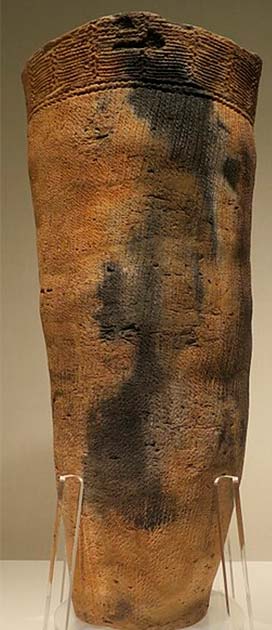Is the 10,000-Year-Old Yonaguni Monument a Man-Made Marvel or Nature's Art?
Nestled along the southern coast of Yonaguni, Japan, are enigmatic submerged ruins that have captured the fascination of researchers and ignited fervent debates. Believed to date back approximately 10,000 years, the origin of the Yonaguni monument remains shrouded in mystery. Hotly debated among experts, some asserting that these formations are unmistakably man-made, while others, adopting a more conservative stance, attribute their creation to the forces of natural phenomena. This intriguing archaeological site continues to be a subject of exploration, sparking curiosity and speculation about its true origins.
Discovery of the Yonaguni Monument And Initial Controversy
The unique and awe-inspiring site was discovered in 1995 by a diver who strayed too far off the Okinawa shore and was dumb-struck when he stumbled upon the sunken arrangement of monolithic blocks "as if terraced into the side of a mountain". The structure sparked instant controversy and attracted crowds of diving archaeologists, media and curious hobbyists, none of whom were able to ascertain its identity.
- Yonaguni Monument: The Truth Behind Japan's Mysterious 'Atlantis' (Video)
- 12,000-Year-Old Lost City Off New Orleans Coast or Imagination Gone Wild?
Late in the following year, more serious attempts were made to gather data and map out the structure. The process revealed many surprising findings including what appears to be a massive arch or gateway of huge stone blocks which appeared to fit together perfectly, right angled joins, carvings and what appeared to be stairways, paved streets and crossroads and grand staircases leading to plazas surrounded by pairs of towering features resembling pylons.

Divers investigate the huge rock structure at Yonaguni, Okinawa. (nudiblue/ Adobe Stock)
As teams of expert divers fanned out from the south coast of Okinawa using grid-search patterns, they found five sub surface archaeological sites near three offshore islands. The locations vary at depths from 100 (30.5 m) to only 20 feet (6 m).
Proponents of the view that the sites are man-made point out features such as two round holes (about 2 feet wide, 61 cm) and a straight row of smaller holes that appear to have been an attempt to split off a section of the rock by means of wedges, as in ancient quarries. Professor Masaaki Kimura, a marine seismologist of the University of the Rykyus, also pointed out a number of marks, such as a plus sign and a V shape, that appear to show that human beings worked the stone and could have been made by wedge-like tools called kusabi.

This is a model of Yonaguni Monument, the concrete phenomenon found under the sea off Yonaguni Island, Japan.(Liangtai Lin)
While many of the features seen at Yonaguni are also seen in natural sandstone formations throughout the world, the concentration of so many peculiar formations and 90-degree angles in such a small area seems peculiar.
Natural Formations
Despite the unusual features displayed at Yonaguni, there remains a small group of scientists who have studied the formation and who are adamant that the large blocks formed naturally as a result of tectonic movement and other natural phenomena.

Underwater view of the massive Yonaguni Monument. (Vincent Lou/CC BY 2.0)
Geologist Robert Schoch of Boston University is one scientists who believes that the structures were naturally formed and acknowledges that they may have been used or modified by humans in the past. He points to the fact that the site lies in an earthquake-prone region and that earthquakes tend to fracture rocks in a regular manner. This is also the view of John Anthony West who believes that the so-called walls are simply natural horizontal 'platforms' which fell into a vertical position when rock below them eroded and the alleged roads are simply channels in the rock.
Other examples of natural formations with flat faces and sharp, straight edges are the basalt columns of the Giant's Causeway and the natural staircase formation on Old Rag Mountain.
- Pavlopetri: 5,000-Year-Old Town Discovered Underwater in Greece
- Atlantis: Examining the Legendary Tale of Plato
Remnants of an Ancient Civilization?
Nevertheless, many scientists are persisting in their search for further evidence of their man-made nature with the belief that the stone structures are the remnants of an old city that must have existed around 10,000 years ago when the sea level was much lower than it is today since it does not appear that the site ‘fell’ into the sea.
One proponent of this view is explorer and researcher Graham Hancock who in his book titled Underworld writes: “It was the submerged structures of Japan that first awakened me to the possibility that an underworld in history, unrecognized by archaeologists, could lie concealed and forgotten beneath the sea” (Hancock 2002).
Hancock draws parallels between Yonaguni and other ruins found beneath the waters of Lake Titicaca and in Dwarka, off the coast of India, which offer further evidence for the existence of a vast underwater world containing structures stretching back to the dimmest chapters of human antiquity.
If the structures at Yonaguni are indeed the remains of an ancient city, one possibility is the prehistoric inhabitants of Japan called the Jomon, who existed from about 12,000 BC to around 300 BC and who developed a sophisticated culture. The Jomon is often compared to pre-Columbian cultures of Pacific Northwest North America because in both regions cultural complexity developed within a primarily hunting-gathering context.

Early stage of Jomon pottery. (Public Domain)
Although their society was considered ‘primitive’ by the standards of later times, they were the first culture on Earth to develop pottery, according to mainstream theorists. Examples of this technology date back to the time when many of the submerged structures of Yonaguni would have been above water, and if they were in fact built by human hands, this would have been the time that their construction was underway.
Researchers are continuing to investigate these unique and perplexing underwater worlds with regards to how they relate to our ancient past and to unravel the mysteries surrounding their true origins.
Certainly, the investigation into the Yonaguni Monument remains a continuous process, and we eagerly anticipate the day when the mystery is ultimately unraveled. Employing cutting-edge technologies such as underwater sonar mapping, 3D modeling, and geophysical studies, researchers strive to unveil the origins of this enigmatic site. Patiently, we observe the ongoing efforts with anticipation.
Top image: The enigmatic underwater Yonaguni monument. Source: nudiblue/Adobe Stock


















Comments
Let's assume for a moment that there was a civilization that was able to build objects in a monolithic way. What would a quarry look like? In my opinion, it would look exactly like this. No recognizable sense, but you could clearly see traces of the work.
double post,. sorry
Curt, look up Gobleki Tepi. It's huge, and they are only scratching the surface. It is also 10,000 years old.
I think thanks to Lidar a whole earlier phase of archaeology will be opened up.
Knowledge and truth change with discoveries. As a child, Inwas told that dinosaurs must have been water dwelling, as their structure would have collapsed without the buoyancy of water. Things change. ;)
You are quite right, an INNER/INTERNAL corner of three surfaces each in a 90 degrees convergence to the other two is almost impossible to occur naturally beyond rock fragments of a few centimeters long - due to mechanical reasons. This is obvious at a certain area where these surfaces are several meters long, not to mention that a) there are peripheral steps to the horizontal surface, and b) I have seen a printed reproduction (to the office next to mine) of 19th century copper engravings showing the Pnyka Step in Athens - and it is IDENTICAL to all details with the Yonaguni area I am referring to (peripheral steps - even the number of steps if I remember correctly), 3 surfaces' convergence at 90 degrees angles, even the huge rock it has been carved on). If you are in the mood, please continue reading of the following, the first three elements are hard facts, easily verifiable, the fourth is part theory:
A) the inhabitants of prehistoric Japan until 600-300 BC were 'white' - not from east Asia,
b) archaic ancient Greek symbols were widely in use in this area of Japan until the end of the 19th century (19th century photos have been published),
c) the Yona/Yonian, Yunan, Junan, Jawan, Yawan, Ionian is definitely the prefix for anything Greek through the whole of Asia, from the Mediterranean Sea to the Pacific Ocean (including the YUNAN area in China, where ancient cities with many Greek Art style findings, architecture and furniture have been found),
d) Greek Mythology, which is not only about gods and monsters and often seems to be historically accurate, clearly states that there was a great campaign to the east under Dionysus some millennia BC, (theory part: possibly to reunite with the Greeks living there). (Theory part: this is also considered to be one of the tasks for the continuation of the campaign to the East after Alexander the Great conquered the Persian Empire) - please remember that his formidable mother, Olympias, was privy to some of the Holy Mysteries of the ancient Greek religion and, quite possibly, the source for his 'secret' knowledge of central Asia; ancient authors refer to the books he carried from Greece and described the areas he was campaigning through - and that this knowledge was not known to exist.
MORE SCIENTIFIC FACTS: The names of several famous Japanese landmarks have been identified by linguists as of Greek origin - Hiroshima and Mount Fuji/Yamanaka lake among them. Other linguists have PROVEN that far too many words in pacific islands' dialects are of similar to Greek phonetics and meaning to be attributed as coincidence. The last catastrophic eruption of Mount Fuji is set at 10,000 BC approx. This coincides with one of the cataclysmic events of global scale described in Greek mythology - or should we say history? Theory: the loss of contact between eastern-most (beyond Iran -
tribal 'cousins' according to Greek Mythology/History) and the rest of the Greeks is set during this time.
I seem to remeber reading that 90 degree angles are quite rare in nature. Also, even if it natural, how could so many 90 degree angles appear so close together? Did they migrate there? I think this is just another case of mainstream archeologists ignoring evidence that doesn’t fit their theory of human evolution, I think all these underwater structures are evidence of an advanced society that lived pre last ice age.
Pages